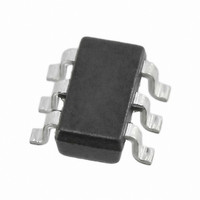AP5100WG-7 Diodes Inc, AP5100WG-7 Datasheet - Page 7

AP5100WG-7
Manufacturer Part Number
AP5100WG-7
Description
IC PWM BUCK CM 26SOT
Manufacturer
Diodes Inc
Datasheet
1.AP5100WG-7.pdf
(10 pages)
Specifications of AP5100WG-7
Pwm Type
Current Mode
Number Of Outputs
1
Frequency - Max
1.7MHz
Duty Cycle
87%
Voltage - Supply
4.75 V ~ 24 V
Buck
Yes
Boost
No
Flyback
No
Inverting
No
Doubler
No
Divider
No
Cuk
No
Isolated
No
Operating Temperature
-25°C ~ 85°C
Package / Case
SOT-26
Frequency-max
1.7MHz
Mounting Style
SMD/SMT
Duty Cycle (max)
87 %
Efficiency
90 %
Input / Supply Voltage (max)
24 V
Input / Supply Voltage (min)
4.75 V
Maximum Operating Temperature
+ 85 C
Minimum Operating Temperature
- 25 C
Operating Temperature Range
- 25 C to + 85 C
Output Voltage
3.3 V
Supply Current
0.4 mA
Switching Frequency
1.4 MHz
Lead Free Status / RoHS Status
Lead free / RoHS Compliant
Other names
AP5100WG-7DITR
Available stocks
Company
Part Number
Manufacturer
Quantity
Price
Company:
Part Number:
AP5100WG-7
Manufacturer:
MICROCHIP
Quantity:
12 000
Part Number:
AP5100WG-7
Manufacturer:
DIODES/美台
Quantity:
20 000
Applications Information
Setting the Output Voltage
Choose the inductor ripple current to be 30% of the
maximum load current. The maximum inductor peak
current is calculated from:
Peak current determines the required saturation current
rating, which influences the size of the inductor. Saturating
the inductor decreases the converter efficiency while
increasing the temperatures of the inductor, the MOSFET
and the diode. Hence choosing an inductor with
appropriate saturation current rating is important.
A 1µH to 10µH inductor with a DC current rating of at least
25% percent higher than the maximum load current is
recommended for most applications.
For highest efficiency, the inductor’s DC resistance should
be less than 200mΩ.
improved efficiency under light load conditions.
Input Capacitor
The input capacitor reduces the surge current drawn from
the input supply and the switching noise from the device.
The input capacitor has to sustain the ripple current
produced during the on time on the upper MOSFET. It
must hence have a low ESR to minimize the losses.
Due to large dI/dt through the input capacitors, electrolytic
or ceramics should be used. If a tantalum must be used, it
must be surge protected. Otherwise, capacitor failure
could occur. For most applications, a 4.7µF ceramic
capacitor is sufficient.
Output Capacitor
The output capacitor keeps the output voltage ripple small,
ensures feedback loop stability and reduces the overshoot
of the output voltage. The output capacitor is a basic
component for the fast response of the power supply. In
fact, during load transient, for the first few microseconds it
supplies the current to the load. The converter recognizes
the load transient and sets the duty cycle to maximum, but
the current slope is limited by the inductor value.
Maximum capacitance required can be calculated from the
following equation:
Where
AP5100
Document number: DS32130 Rev. 2 - 2
ΔV
is the maximum output voltage overshoot.
C
o
I
L(MAX)
=
(Δ
L(I
V
OUT
+
Equation 3
Equation 4
=
V
Use a larger inductance for
OUT
I
LOAD
+
ΔI
2 )
(Continued)
inductor
2
−
+
V
(Continued)
ΔI
OUT
2
L
2 )
2
1.2A Step-Down Converter with 1.4MHz Switching
www.diodes.com
7 of 10
ESR of the output capacitor dominates the output voltage
ripple. The amount of ripple can be calculated from the
equation below:
An output capacitor with ample capacitance and low ESR
is the best option. For most applications, a 22µF ceramic
capacitor will be sufficient.
External Diode
The external diode’s forward current must not exceed the
maximum output current. Since power dissipation is a
critical factor when choosing a diode, it can be calculated
from the equation below:
Note: 0.3V is the voltage drop across the schottky diode. A
diode that can withstand this power dissipation must be
chosen.
External Bootstrap Diode
It is recommended that an external bootstrap diode be
added when the input voltage is no greater than 5V or the
5V rail is available in the system. This helps improve the
efficiency of the regulator. The bootstrap diode can be a
low cost one such as IN4148 or BAT54.
Under Voltage Lockout (UVLO)
Under Voltage Lockout is implemented to prevent the IC
from insufficient input voltages. The AP5100 has a UVLO
comparator that monitors the internal regulator voltage. If
the input voltage falls below the internal regulator voltage,
the AP5100 will latch an under voltage fault. In this event
the output will be pulled low and power has to be re-cycled
to reset the UVLO fault.
P
Figure 6. External Bootstrap Diode
Vout
diode
AP5100
capacitor
=
(1
−
BST
SW
Equation 5
V
=
OUT
V
IN
ΔI
1
6
inductor
)
×
I
out
5V
×
×
AP5100
10nF
BOOST
DIODE
ESR
0.3V
© Diodes Incorporated
November 2010
Frequency


















